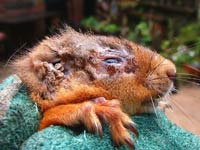The Open University’s Creative Climate project seeks to bring issues such as climate change out of the public arena and into individuals’ homes via personal video diaries, audio tracks, short films and text. All these resources are stored and catalogued in one easily accessible online platform.
You can browse the Creative Climate website and watch a video diary of a polar scientist commenting on his recent expedition and his observations on the changing sea ice patterns in the Arctic.
Through the project you will be able to watch how local community groups are trying to change the way transport, energy and waste in your part of town and contribute your own thoughts and experiences.

Designed by Dr Joe Smith, a leading specialist in environmental communications and public understanding, this 10-year project aims to respond directly to limitations of existing environmental media and learning content and unlock the power of the web to enhance environmental understanding and action.
Read more here


 As reported by The Telegraph, the Intergovernmental Panel on Climate Change has produced the first part of its latest assessment on climate change. The report is the fifth by the IPCC and the first in six years.
As reported by The Telegraph, the Intergovernmental Panel on Climate Change has produced the first part of its latest assessment on climate change. The report is the fifth by the IPCC and the first in six years.




